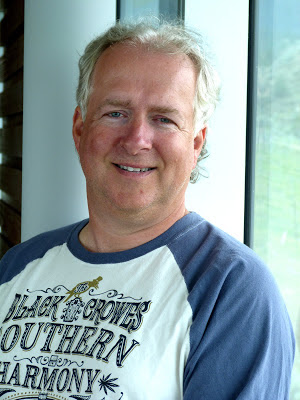Sage Hills Vineyard & Winery
T 250.276.4344
When to visit: No tasting room
For
Rick Thrussell, the dream of the winery lifestyle was planted during an
Okanagan camping vacation in the early 1980s when he and his friends spent an
afternoon at Uniacke Estate Winery. The predecessor to CedarCreek Estate
Winery, Uniacke had opened in 1980 and was one of the Okanagan’s earliest
cottage wineries.
Rick
has a vivid memory of that afternoon. “It
was one of those quintessential Okanagan days,” he remembers. “It was warm and
I was in my shorts. I looked out over this vineyard and thought what an
enjoyable way to live - to get up every day and look at this.” The dream was
set aside until 2006, while he pursued other careers.
Born in Vancouver
in 1959, Rick majored in geography, political science and communications at Simon Fraser
University
He was not ready to
retire, however. “The thought of retirement just scares the crap out of me,” he
admits. “I just can’t imagine retiring. I need to be busy. When I was building
a house, I would work seven days a week until it was finished.”
As he considered life
after home building, he remembered the afternoon at Uniacke. “I was naïve enough to freeze that moment in my mind
and think this is what it is like every day in the Okanagan,” he says. So he
decided to become a grape grower.
In 2006, he bought a
4.5-hectare (11-acre) orchard on a Summerland bench overlooking Okanagan Lake
“We
planted at probably the most difficult time to plant grapes in the last 20
years,” Rick suggests. Heavy rain in 2007 sent a debris torrent sliding through
his property and into the lake. Severe frost that winter killed about 15% of
the young vines and the subsequent freezes further set back vines already
struggling to establish themselves organically.
Determined
to avoid herbicides and pesticides, Rick relied on the expertise of Karnail
Singh Sidhu, the owner of Kalala Estate Winery and a leading organic consultant
in the Okanagan. “My vines have always
had to struggle to grow. They have competed against weeds for five years.
Everything had to be done by hand.” Rick
has taken to calling himself the “head weed picker.”
The debut wines were made by consultant Tom
DiBello at nearby Okanagan Crushpad Winery, an interim measure until Rick
builds his own winery. His ultimate target is to make a maximum of 4,000 cases
a year.
“I am a bit of a control
freak,” he admits. “I like to be involved in everything. I think beyond that
volume, I would not be able to be. I was like that in building as well. I would
build one home at a time because that’s what I could pay attention to. When I finished,
I would go on to the next one.”
The goal is to produce
premium quality wines which will be priced as such ($28 for the whites, $45 for
a Pinot Noir still in barrel. In his view, that is the appropriate category for
Okanagan wineries.
“I find myself sometimes
in discussion with people who say Okanagan wines are so expensive,” says Rick,
who is cropping at no more than two tons an acre. “If I want to double my crop,
then I can drop the price of my wine. But I don’t believe the path to success
for the Okanagan is making mediocre wine.”
He points out that the
Okanagan has far fewer acres of vineyard than other major west coast wine
regions. “Washington State has 140,000 acres of vineyard; Oregon has close to 80,000 acres and California
“It is one thing to put a
high price on your bottle because that’s what it cost to make it,” he adds. “You
have to deliver. You have got to provide the consumer with a wine that they
believe is worth what they are paying for it.”
The Sage Hills vineyard,
which is now solidly established, has an exceptional view of Okanagan Lake
It will also share the
modernist lines of Rick’s cliff top home, a design inspired by his admiration
for the work of the legendary architect, Frank Lloyd Wright. The home and the
planned winery have geothermal heating and cooling. It is an extension of
Rick’s insistence on growing grapes organically without herbicides.
Here are notes on the
first releases.
Sage Hills Small Lots Pinot Gris 2012 ($28). This is a wine of remarkable complexity,
starting with aromas of citrus and bready lees. The flavours of apple, pear,
peach and lychee unwrap themselves layer upon layer on the palate. The finish
is crisply dry. 91.
Sage Hills Small Lots Gewürztraminer 2012 ($28). This wine begins with delicate aromas of
rose petals, spice and grapefruit. On the palate, there is more spicy
grapefruit. However, the flavours are moderated; this is not a flashy
Gewürztraminer but a dry, food-friendly Alsace
Sage Hills Syrah Rose 2012 ($28). This delicious dry rosé has spicy aromas and
flavours of strawberry and plum, with a texture that almost gives this the heft
of a light red table wine. This is a versatile wine, suitable for everything
from the hot tub to the grilled salmon. 90-91.




No comments:
Post a Comment